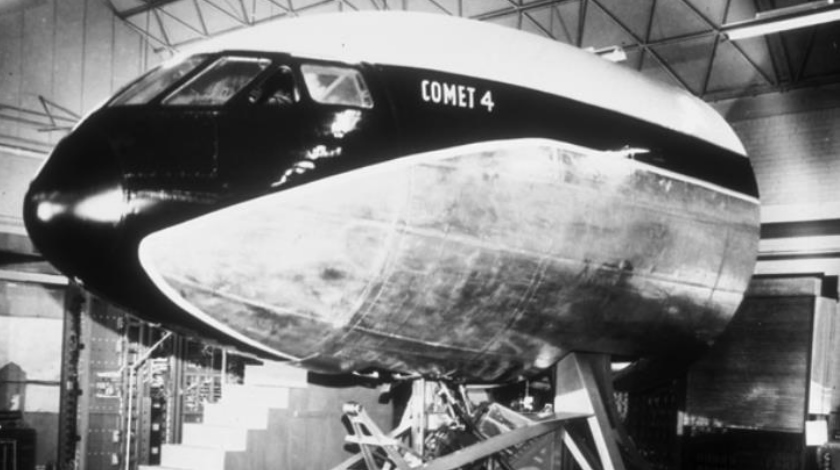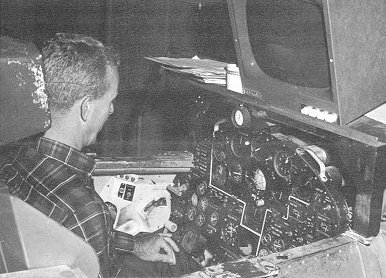Published: October 29, 2021
Topics: Enterprise VR, News, Simulation, Technology, Training
Tags: flight simulators, pilot training
Part 2 of 3: The introduction of computers into flight simulation training.
As we continue in part 2 of our 3 part series about the history of flight simulation, we witness the integration of the first analog computers into simulators, beginning at the end of World War II and into the 1950’s. While the computer brought along a new level of technology, it also generated an equal or greater number of challenges and problems.
“When we realized that militaries and airlines were training pilots on outdated simulators which vaguely mirrored the craft they were to pilot soon, due to the inability to stay on top of the constantly changing technology, we knew that we had to design a VR simulator which was adaptable, modifiable and modular so that no matter the advances in the actual aircraft, the VR simulator would still be up to date and viable,” Marek Polčák, CEO at VRgineers.
The continued evolution of flight simulators
Following World War II, flight simulators began to move from the realm of militaries to that of airlines. Some of the world’s leading airlines began to contract out the creation of flight simulators, launching global travel by flight as the number of pilots and airplanes increased significantly.
At the same time, flight simulators were utilized by many space programs, most notably Apollo 13, which facilitated the first landing on the moon. Without the assistance of flight simulated training, this and many other aeronautic events may have never have occurred.
Now let’s dive into how computers, analog and digital, changed the way simulators operated.
Simulators take on computers
Analog computers made it possible to solve the flight equations of motion of the aircraft which allowed the devices to respond to, rather than merely duplicate, the aerodynamic forces. This ability greatly increased the effectiveness of training and spurred on further developments.
The first full simulator for the Boeing 377 Stratocruiser was developed by the Curtiss-Wright Corporation and sold to pan American Airways, making it the first of its kind to be owned by an airline. Soon Curtiss-Wright teamed up with Redifon to produce the Comet 1, which was sold to multiple airlines such as Qantas, British Overseas Airways Corporation (BOAC), and American Pan American.

https://aviationvoice.com/what-do-you-know-about-the-evolution-of-full-flight-simulators-201706071318/
Thanks to Link taking on the challenge of utilizing d.c. over a.c. for the analog computation, a significantly more difficult technology, they were able to bring a higher level of precision to the process. By the mid 1950’s the most sophisticated simulators, to date, were in operation with Pan American and Qantas for the B707 aircraft.

https://citeseerx.ist.psu.edu/viewdoc/download?doi=10.1.1.132.5428&rep=rep1&type=pdf
One of the biggest issues facing airlines at this time was the lack of accurate performance data for the basic structure and engines of the airplanes, which meant that the airframe manufacturers were forced to use trial and error to discern and achieve the desired performance. This changed however with the introduction of subsonic jet transport aircraft, which provided more feedback and therefore more opportunity for operators to improve the
accuracy and thereby improve the quality of training. However, despite some advances, overall this was not the case and analog simulators began to see their days numbered.
Digitizing flight simulation
Despite these advances, analog simulators were unreliable when used constantly for hours on end. After being in use for 10-12 hours a day they required a good amount of maintenance.
And while they did exist at this time, the first digital computers of the day were still not arithmetically capable of taking simulators to the next level. The University of Pennsylvania took on this challenge in 1950, resulting in a special purpose device called a UDOFT (Universal Digital Operational Flight Trainer) being designed at the university.
It was just a few short years later, in the early 1960’s, when Link designed a real time simulation, using three parallel processors for arithmetic, function generation, and radio station selection. This new-age simulator used a drum memory to enhance the storage capacity ( 0K) and the speed limitation of the core memory. The Mark 1, was seen as an incredible breakthrough and soon became a staple for airlines around the world, as well as the U.S. Military.

https://history.nasa.gov/SP-60/ch-4.html
Re-introducing motion into flight simulation
While some of the earliest devices for flight simulation contained motion, by the 1950’s this was no longer the case. Simulator manufacturers had been focusing on preparing pilots for utilizing instruments and learning scenarios and procedures for various situations they might confront in the cockpit.
The lack of motion had been recognized for several decades at this point, however, the challenge of creating and maintaining the massive structures and hydraulic systems, which could produce the necessary motion to train pilots, was a huge undertaking.
Redifon was contracted by BOAC to adapt a pitch motion system in 1958, and soon more complex motion systems were introduced, eventually reaching 6 degrees of freedom.
NASA had by this point been working on designing simulators that generated just the right motion to properly test pilots before the flight. With their knowledge, NASA produced a set of motion equations which went on to be used by many simulator manufacturers.
Technology changes and improves, but problems still persist
At the same time that flight simulators were evolving, so too were the aircraft for which they were made to imitate. As these aircraft became more specialized, in regards to the technology, cockpits, controls, and instrument displays, the simulators needed to also specialize. This meant the end of generic, generalized simulators and led to the design and development of simulators that were near or exact replicas of the aircraft that pilots would be flying. While in many ways, this allowed pilots to become highly specialized and familiar with an aircraft before ever getting into the real deal, it also led to other problems. As touched upon at the end of Part I, efficiency has always been a key component in flight simulation, yet this path down individualized simulators did not improve the efficiency in training or maintaining simulators.
Continue the journey into the History of Flight Simulation – Part 3.
_____________________
Follow Us on Social Media
Would you like to know our latest news and take a peek into VRgineers’ life? Follow us on our Instagram, Facebook, and LinkedIn.

